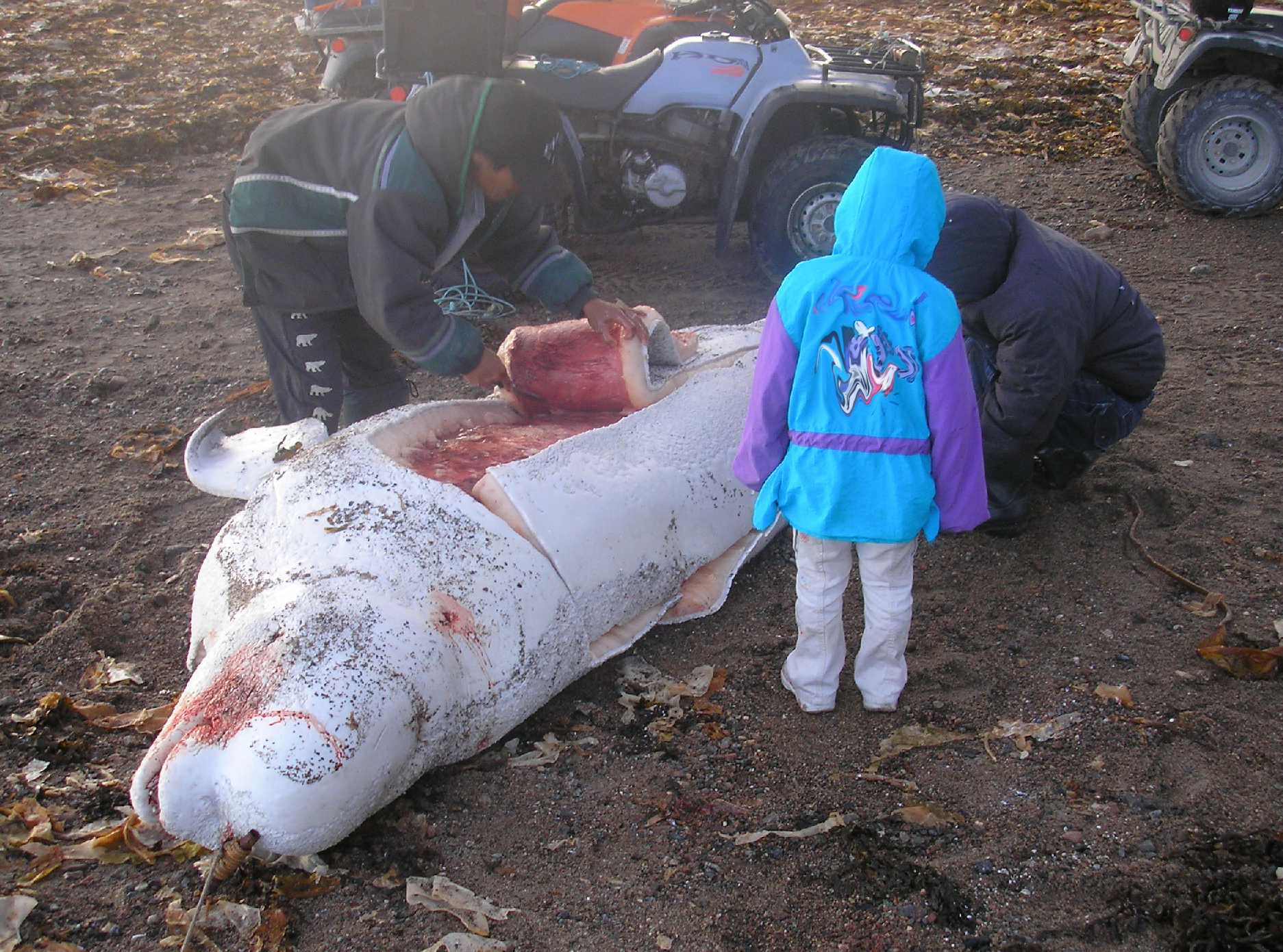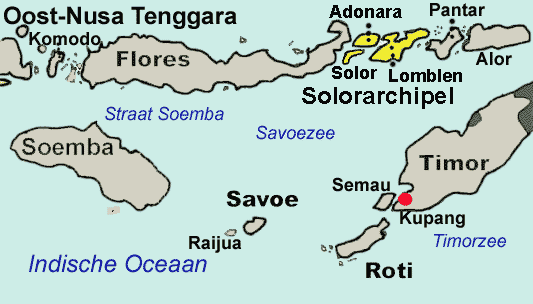|
Paledang
Paledang, peledang, or pledang is a type of Indonesian sailing vessel used for aboriginal whaling from the communities of Lamalera and Lamakera in the islands of Lembata and Solor, respectively. It is propelled by sails made from woven pandan leaves and by paddles. The boat is equipped with a bamboo harpoon, whose hook is attached to the boat using the "sacred rope" called ''leo'', which is made from the leaves of the gebang palm (''Corypha utan'') and fiber from waru bark (''Hibiscus tiliaceus''). The boat's crew of around 6 to 10 people also wear a ''leo aka'' sacred rope made from cotton and turi bark (''Sesbania grandiflora'') for luck. The person tasked with the harpoon is called the ''Lamafa'', a position of great importance. Alongside him is an assistant who handles the ''leo'', who also has a high status along with the person who controls the boat (called the ''Tuan Perahu'', lit. "boat master"). Paledang are made by traditional boat-makers called the ''Ata Molan''. He de ... [...More Info...] [...Related Items...] OR: [Wikipedia] [Google] [Baidu] |
Whaleboat
A whaleboat is a type of open boat that was used for catching whales, or a boat of similar design that retained the name when used for a different purpose. Some whaleboats were used from whaling ships. Other whaleboats would operate from the shore. Later whaleboats usually could operate under sail or oar - American whaling crews in particular obtained better results by making their first approach to a whale under sail, then quickly unstepping the mast and using oars thereafter. Most whaleboats have double-ended, clinker-built hulls of light construction. The hulls were narrow and with sharp ends to achieve the best possible speed for the length of waterline. Length was between 27 and 31 feet. Beam was just over a fifth of the length. Typically they were propelled by five oars when rowed, and stepped a single removable mast when under sail. A rudder was used when under sail and a steering oar when the boat was rowed. The latter provided the manoeuvrability needed when closing ... [...More Info...] [...Related Items...] OR: [Wikipedia] [Google] [Baidu] |
Aboriginal Whaling
Aboriginal whaling or indigenous whaling is the hunting of whales by indigenous peoples recognised by either IWC (International Whaling Commission) or the hunting is considered as part of indigenous activity by the country. It is permitted under international regulation, but in some countries remains a contentious issue. (The hunting of smaller cetaceans is covered at Dolphin drive hunting.) It is usually considered part of the subsistence economy. In some places, whaling has been superseded by whale watching instead. This article deals with communities that continue to hunt; details about communities that have ended the practice may be found in History of whaling. International regulation Under the terms of the 1986 moratorium, the International Whaling Commission allows the activity to be carried out by aboriginal groups if it occurs on a subsistence basis, similar to subsistence fishing. This Aboriginal Subsistence Whaling is restricted to native peoples and others working ... [...More Info...] [...Related Items...] OR: [Wikipedia] [Google] [Baidu] |
Lamalera
Lamalera is a Central Malayo-Polynesian language of the island of Lembata, east of Flores in Indonesia Indonesia, officially the Republic of Indonesia, is a country in Southeast Asia and Oceania, between the Indian Ocean, Indian and Pacific Ocean, Pacific oceans. Comprising over List of islands of Indonesia, 17,000 islands, including Sumatra, .... References Flores-Lembata languages Languages of Indonesia {{au-lang-stub ... [...More Info...] [...Related Items...] OR: [Wikipedia] [Google] [Baidu] |
Lamakera
Lamakera in 1904 Lamakera is a village in Indonesia, on the east tip of Solor Island. It was known for being the place where the most manta rays are killed. It was featured in the 2015 documentary film ''Racing Extinction''. The villagers also hunted whales. History In 1520, the Portuguese established a trading post at Lamakera as a transit harbor between Maluku and Portuguese Malacca. Economy The village used to rely on marine resources because it had no farm. Lamakera was situated in a manta ray hotspot, and so was responsible for one-third of the global catch. They had been known to hunt many kinds of whales and porpoises (''temu'') in a period between March and August; they also used to hunt baleen whales (''kelaru'') but had since ceased out of a traditional prohibition. Blue whales (''lélangaji'', "great ancestor") are prohibited as they are deemed sacred. Each whaler is equipped with different types of harpoons (''kāfé'') made for particular sea game – the smallest ... [...More Info...] [...Related Items...] OR: [Wikipedia] [Google] [Baidu] |
Lembata
Lembata is an island in the Lesser Sunda Islands, also known as Lomblen or Kawela; it is the largest island of the Solor Archipelago, in the Lesser Sunda Islands, Indonesia. It forms a separate regency of the province of Nusa Tenggara Timur. The island has a very irregular coastline with numerous bays and promontories, of which the largest is the Ile Ape peninsula on the island's north coast. The length of the island is about 80 km from the southwest to the northeast and the width is about 30 km from the west to the east. It rises to an elevation of 1,621 metres at Mount Ile Labalekang. To the west lie the other islands in the archipelago, most notably Solor and Adonara in the East Flores Regency, and then the larger island of Flores. To the east is the Alor Strait, which separates this archipelago from the Alor Archipelago. To the south across the Savu Sea lies the island of Timor, while to the north the western branch of the Banda Sea separates it from Buton ... [...More Info...] [...Related Items...] OR: [Wikipedia] [Google] [Baidu] |
Solor
Solor is a volcanic island located off the eastern tip of Flores island in the Lesser Sunda Islands of Indonesia, in the Solor Archipelago. The island supports a small population that has been whaling for hundreds of years. They speak the languages of Adonara and Lamaholot. There are at least five volcanoes on this island which measures only by . The island's area is , and it had a population of 34,029 at the 2020 Census. The official estimate as at mid 2024 was 36,739.Badan Pusat Statistik, Jakarta, 28 February 2025, ''Kecamatan Solor Barat Dalam Angka 2025'' (Katalog-BPS 1102001.5309) Administrative districts The island is divided into three districts (''kecamatan''), tabulated below with their areas (in km2) and their populations at the 2010 Census and 2020 Census, together with the official estimates as at mid 2023.Badan Pusat Statistik, Jakarta, 26 September 2024, ''Kecamatan Solor Barat Dalam Angka 2024'' (Katalog-BPS 1102001.5309040)Badan Pusat Statistik, Jakarta, ... [...More Info...] [...Related Items...] OR: [Wikipedia] [Google] [Baidu] |
Pandanus
''Pandanus'' is a genus of monocots with about 578 accepted species. They are palm-like, dioecious trees and shrubs native to the Old World tropics and subtropics. Common names include pandan, screw palm and screw pine. The genus is classified in the order Pandanales, family Pandanaceae, and is the largest in the family. Description The species vary in size from small shrubs less than tall, to medium-sized trees tall, typically with a broad canopy, heavy fruit, and moderate growth rate. The trunk is stout, wide-branching, and ringed with many leaf scars. Mature plants can have branches. Depending on the species, the trunk can be smooth, rough, or warty. The roots form a pyramidal tract to hold the trunk. They commonly have many thick stilt roots near the base, which provide support as the tree grows top-heavy with leaves, fruit, and branches. These roots are adventitious and often branched. The top of the plant has one or more crowns of strap-shaped leaves that may be s ... [...More Info...] [...Related Items...] OR: [Wikipedia] [Google] [Baidu] |
Paddle
A paddle is a handheld tool with an elongated handle and a flat, widened end (the ''blade'') used as a lever to apply force onto the bladed end. It most commonly describes a completely handheld tool used to propel a human-powered watercraft by pushing water in a direction opposite to the direction of travel (i.e. paddling). A paddle is different from an oar (which can be similar in shape and perform the same function via rowing) – an oar is attached to the watercraft via a fulcrum. The term "paddle" can also be used to describe objects of similar shapes or functions: *A rotating set of paddle boards known as a paddle wheel is used to propel a steamboat or paddle steamer. *In a number of racquet sports (e.g. ping-pong and paddle ball), a "paddle" or "bat" is a short, solid racket used to strike a ball. *A mixing paddle is a device used to stir or mix separate ingredients within a mixture. *A spanking paddle is used in corporal punishment, typically to forcefully hit someone ... [...More Info...] [...Related Items...] OR: [Wikipedia] [Google] [Baidu] |
Corypha Utan
''Corypha utan'', the cabbage palm, buri palm or gebang palm, is a species of palm native to Asia and Oceania. Description It grows up to tall, and, on the Cape York Peninsula of Queensland, up to thick (exceeded only by '' Borassus aethiopum'' and '' Jubaea chilensis'') and bears palmate fronds long. The subspecies or variety C.u. macropoda of the Andaman Islands has a blade or lamina up to in diameter mounted on stalks ( laminae) up to in length. Like other palms of the genus '' Corypha'', this species flowers once at the end of its lifetime (monocarpy), producing a massive inflorescence up to 5 m tall containing up to one million flowers.''Corypha utan'' Palm and Cycad Societies of Australia web page Accessed 20 June 2009 Distribution and habitat [...More Info...] [...Related Items...] OR: [Wikipedia] [Google] [Baidu] |
Hibiscus Tiliaceus
''Hibiscus tiliaceus'', commonly known as the sea hibiscus or coast cottonwood, is a species of flowering tree in the mallow family, Malvaceae, with a pantropical distribution along coastlines. It has also been introduced to Florida and New Zealand. It has been debated whether this species is native or introduced to Hawaii. Names Common names include sea hibiscus, beach hibiscus, coastal (or coast) hibiscus, coastal (or coast) cottonwood, green cottonwood, native hibiscus, native rosella, cottonwood hibiscus, kurrajong, sea rosemallow and dhigga ( Maldivian). The plant was introduced by Austronesian peoples that voyaged across Southeast Asia and Oceania as a source of wood and fibre. This is reflected in the names of the plant as spoken in many related languages spoken in those regions including ''balibago'' ( Tagalog), ''malobago'' ( Bikol), ''malabago'' or ''malbago'' ( Cebuano – Southern), ''maribago'' ( Cebuano – Northern), ''lambago'' (Cebuano - Cagayan de Oro), ... [...More Info...] [...Related Items...] OR: [Wikipedia] [Google] [Baidu] |
Sesbania Grandiflora
''Sesbania grandiflora'', common names vegetable hummingbird, katurai, agati, kathurumurunga, and West Indian pea, is a leguminous tree of family Fabaceae native to Malesia, including Malaysia, New Guinea, and the Philippines. It is widely distributed globally in tropics, equatorial regions. The flowers are eaten in Southeast Asia, Southeast and South Asia. Description ''Sesbania grandiflora'' is a leguminous tree of family Fabaceae. It is fast-growing and soft-wooded, and it grows to heights of . The leaves are regular and rounded, and grow to long, with leaflets in 10–20 pairs or more and an odd one. The flowers white, red or pink and are oblong, long in lax, with two to four flower racemes. The calyx (flower), calyx is campanulate and shallowly two-lipped. The fruits, or seed pods, look like flat, long, thin green beans. They are slender, falcate or straight, and long, with a thick suture, and each contains approximately thirty seeds. The tree thrives under full exposu ... [...More Info...] [...Related Items...] OR: [Wikipedia] [Google] [Baidu] |






